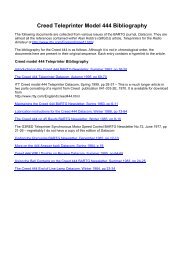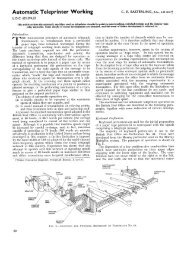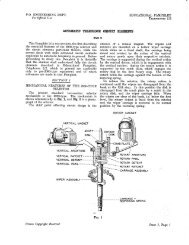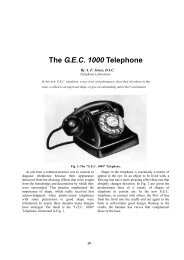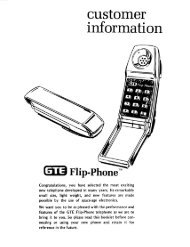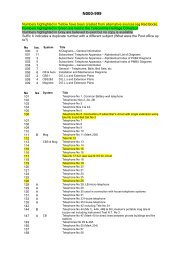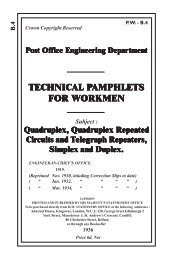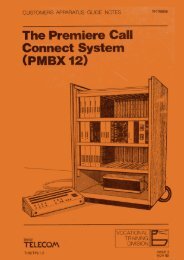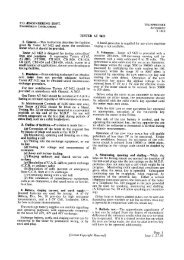TRAFFIC CONTROL TELEPHONE SYSTEMS Circuit - Sam Hallas
TRAFFIC CONTROL TELEPHONE SYSTEMS Circuit - Sam Hallas
TRAFFIC CONTROL TELEPHONE SYSTEMS Circuit - Sam Hallas
You also want an ePaper? Increase the reach of your titles
YUMPU automatically turns print PDFs into web optimized ePapers that Google loves.
Page 66<br />
given in the standard specification. These relays should not be re-adjusted without<br />
checking the current requirements.<br />
Residual Air Gap<br />
The residual air gap is defined as the shortest air gap between the pole-face and<br />
the inner surface of the armature when the relay is operated. It is provided by means<br />
of a stud or screw and locknut. Measurement is made by placing the holed end of the<br />
feeler, with the stud or screw passing through the hole, so that the pole-face is<br />
covered. With the relay operated and the armature held on to its knife edge, the<br />
minimum limit feeler must be free to move while the maximum limit feeler should be<br />
gripped by the armature.<br />
It is unnecessary to check stud residuals unless the relay gives faulty holding or<br />
release performance.<br />
TABLE 1.<br />
When screw residuals are fitted to white or green label relays, the value of the<br />
gap is given on the customer's marking label.<br />
On certain codes of relay which may have red, white or green labels, it is<br />
necessary to vary the residual gap to suit timing or electrical requirements. The<br />
required value, which may differ from the nominal figure shown in the specification,<br />
is marked on the label and enclosed in brackets thus :— (7).<br />
The limits for screw residuals are given in Table 2.<br />
TABLE 2.



